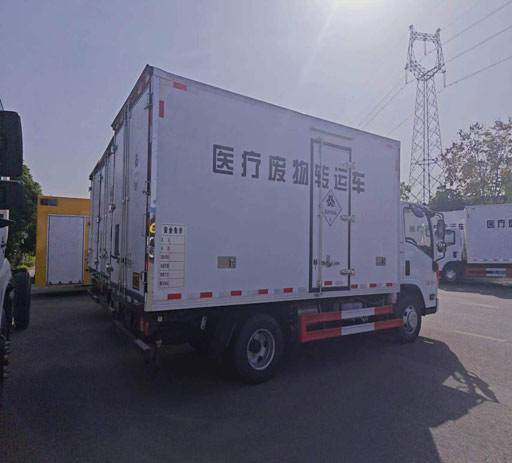Understanding the Capacity of a Fuel Tanker Truck: A Comprehensive Guide

Fuel tanker trucks play a crucial role in transporting fuel from refineries to distribution points. Understanding their capacity not only helps businesses in logistics but also ensures efficient fuel management. This article explores everything you need to know about the capacity of a fuel tanker truck, including sizes, regulations, and tips for optimal usage.
What is a Fuel Tanker Truck?
A fuel tanker truck is a specialized vehicle designed to transport various types of liquid fuel, including gasoline, diesel, and other petroleum products. These trucks come in various sizes and configurations based on the volume they need to carry and the nature of the fuel being transported.
Capacity of Fuel Tanker Trucks
Standard Capacities
The capacity of a fuel tanker truck can vary significantly based on its design and purpose. Here are the standard capacities:
| Type of Truck | Capacity (Gallons) | Capacity (Liters) |
|---|---|---|
| Light Duty Tanker | 1,000 – 2,000 | 3,785 – 7,570 |
| Medium Duty Tanker | 2,000 – 5,000 | 7,570 – 18,925 |
| Heavy Duty Tanker | 5,000 – 11,000 | 18,925 – 41,635 |
Variations Based on Design
Fuel tanker trucks can either be single-compartment or multi-compartment:

- Single-compartment tankers: These trucks have one large tank designed for transporting a single type of fuel.
- Multi-compartment tankers: These trucks feature several compartments, allowing them to transport different types of fuel simultaneously.
Safety Regulations and Compliance
Essential Safety Standards
Transporting fuel comes with several safety regulations aimed at minimizing risk during transit. Here are some key standards:
- DOT Regulations: Compliance with the U.S. Department of Transportation (DOT) regulations is crucial. This includes proper labeling, driver training, and vehicle inspections.
- Hazardous Material Regulations: Tanker trucks must adhere to hazardous material handling regulations to ensure safe transportation.
Inspection Requirements
Regular inspections are necessary to maintain safety standards:
- Annual inspections by certified mechanics.
- Pre-trip and post-trip inspections by drivers.
Factors Affecting the Load Capacity
Weight Limits
The load capacity of a fuel tanker truck is limited by legal weight restrictions. These limits vary by jurisdiction. Factors include:
- The truck’s design.
- The road type and condition.
- Local regulations and weight restrictions.
Fuel Type and Density
Different types of fuel have varying densities, which impacts the total volume that can be transported:
| Type of Fuel | Densities (lbs/gallon) |
|---|---|
| Diesel | 7.1 |
| Gasoline | 6.3 |
| Jet Fuel | 6.7 |
Calculating Load Capacity
Steps to Calculate Capacity
To understand how much fuel can be transported using a tanker truck, it’s essential to calculate its load capacity. Here are the steps to follow:
- Determine the vehicle’s maximum gross weight (GVW).
- Subtract the weight of the empty truck (curb weight).
- The result is the maximum weight of the load the truck can carry.
Practical Examples of Capacity Utilization
Example 1: Diesel Transportation
A heavy-duty fuel tanker truck with a capacity of 10,000 gallons can legally carry:
- Maximum Weight: 80,000 lbs (in certain jurisdictions).
- Weight of Diesel: 70,000 lbs (10,000 gallons x 7.1 lbs/gallon).
This means that this type of vehicle can be filled to its maximum legal weight limit without exceeding total capacity.
Example 2: Multi-fuel Transport
A multi-compartment tanker truck has a total capacity of 12,000 gallons divided into three compartments:
- Compartment 1: 3,000 gallons of gasoline.
- Compartment 2: 4,000 gallons of diesel.
- Compartment 3: 5,000 gallons of jet fuel.

This configuration allows for flexibility in transportation, optimizing load capacity based on demand.
Common Challenges in Fuel Transport
Adverse Weather Conditions
Weather can significantly affect transport procedures:
- Rain and snow can create hazardous road conditions.
- Extreme heat can cause fuel to expand, posing safety risks.
Regulatory Changes
Staying updated with changing regulations is crucial for fleet management:
- Regular training for drivers on compliance issues.
- Adapting logistical strategies to meet different state regulations.
Tips for Efficient Fuel Transport
Optimization Strategies
To maximize the efficiency of fuel transportation, consider these tips:
- Route Planning: Use software to determine the most efficient routes, reducing transportation times and costs.
- Regular Maintenance: Conduct routine inspections and maintenance to ensure the vehicle operates efficiently.
Using Technology
Leverage technology for better management:
- GPS tracking to monitor vehicle movement.
- Inventory management systems to track fuel levels accurately.
Frequently Asked Questions (FAQs)
1. How much fuel can a standard fuel tanker truck carry?
A standard fuel tanker truck can carry between 5,000 to 11,000 gallons, depending on the design and weight restrictions.
2. What regulations must fuel tanker trucks comply with?
Fuel tanker trucks must comply with DOT regulations, hazardous material handling standards, and state-specific transportation laws.
3. Can a fuel tanker truck carry multiple types of fuel?

Yes, multi-compartment tanker trucks can carry different types of fuel simultaneously, allowing for flexibility in delivery.
4. What factors affect fuel tanker truck capacity?
Key factors include the truck’s weight limits, fuel density, and overall design (single vs. multi-compartment).
5. How can I optimize the use of a fuel tanker truck?
Optimize fuel transportation by employing route planning, investing in regular maintenance, and utilizing technology for monitoring and management.
6. What are the risks of transporting fuel?
Risks include accidents due to adverse weather, regulatory compliance issues, and the potential for spills or leaks.
